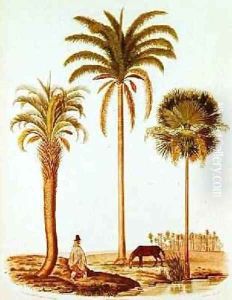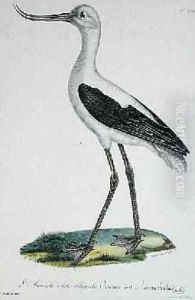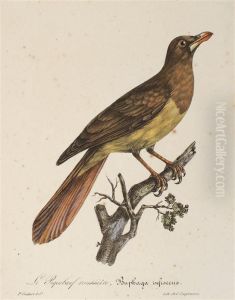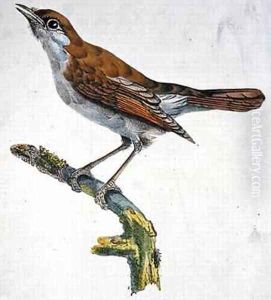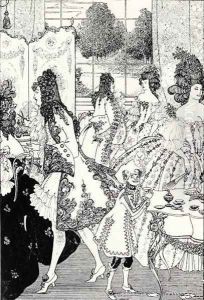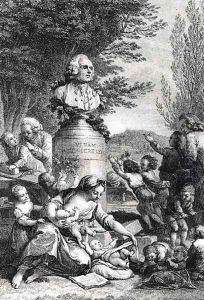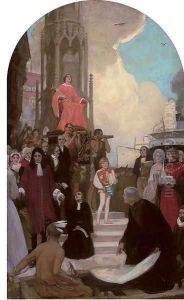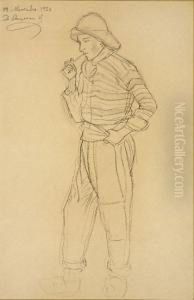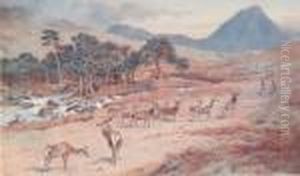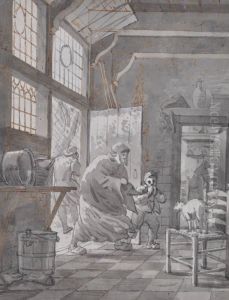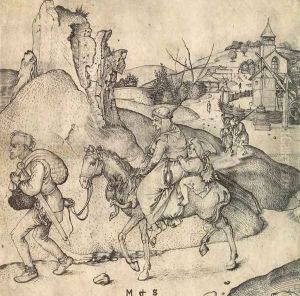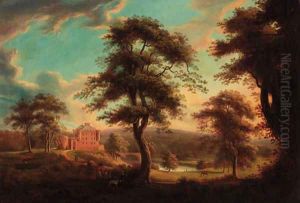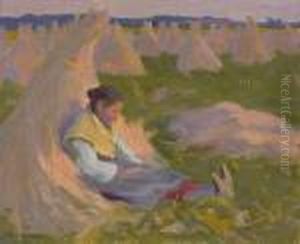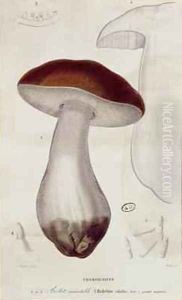





Boletus edulis, illustration for an edition of 'Traite des Champignons by Jean Jacques Paulet 1740-1826
-
About Reproduction
Discover the allure of art with our faithful reproduction of "Boletus edulis, illustration for an edition of 'Traite des Champignons by Jean Jacques Paulet 1740-1826", originally brought to life by the talented Paul Louis Oudart. Unlike posters or prints, our hand-painted oil painting breathes an unique sense of depth and texture into your space. Every detail, every stroke, and every texture is meticulously recreated, paying the perfect homage to Paul Louis Oudart and his artistic vision.
Owning this piece is more than just decoration - it's a statement of your refined taste in art. Let the vibrant colors and intricate details of this replica serve as a daily reminder of the beauty in our world. Elevate your decor and appreciate the richness of art with our replica of this masterpiece.
-
Painting Description
Boletus edulis, commonly known as the porcini mushroom, king bolete, or penny bun, is a highly regarded edible mushroom belonging to the family Boletaceae. This species is widely distributed across the Northern Hemisphere, including Europe, Asia, and North America, and is known for its robust size, distinctive appearance, and culinary value. The cap of Boletus edulis typically measures between 7 to 25 centimeters in diameter, displaying a rich brown color that can vary from light to dark shades. The surface of the cap is smooth and slightly sticky when moist, while the flesh underneath is white and does not change color when cut.
The stipe, or stem, of Boletus edulis is stout and club-shaped, often featuring a fine network of raised ridges known as reticulation near the top. This reticulation is a key identifying feature of the species. The pores on the underside of the cap are initially white, turning yellow and then olive-green as the mushroom matures. These pores release a brown spore print, which is another characteristic used for identification.
Boletus edulis forms mycorrhizal associations with various trees, particularly conifers and hardwoods such as pine, spruce, fir, and oak. This symbiotic relationship is crucial for the mushroom's growth and the health of the forest ecosystem. The fruiting bodies of Boletus edulis typically appear in late summer to autumn, often in clusters.
Renowned for its nutty flavor and firm texture, Boletus edulis is a prized ingredient in many culinary traditions. It can be used fresh, dried, or preserved, and is a staple in dishes such as risotto, soups, and sauces. The mushroom's popularity extends beyond its taste, as it is also valued for its nutritional content, being rich in protein, vitamins, and minerals.
Illustrations of Boletus edulis, such as those found in historical works like 'Traite des Champignons' by Jean Jacques Paulet, often highlight the mushroom's distinctive features and have contributed to its recognition and study. These detailed depictions, created by artists like Paul Louis Oudart, provide valuable visual references that aid in the identification and appreciation of this esteemed species.
-
Lead Time & Shipping
When you order this oil painting replica, it typically takes 2-3 weeks to paint. If the artwork is more complex, it might need a little more time to ensure the best quality. Once it's ready, we'll send you a photo for your approval. After you give the green light, we'll ship it to you for free.
-
Return & Refund
We believe in the quality of our hand-painted oil painting reproductions, and your satisfaction is our priority. If for any reason, you are not completely satisfied with your purchase, we offer a 45-day return policy. You can return your artwork within 45 days of receipt and receive a full refund. Please note that the artwork must be returned in the original packaging and in the same condition as it was received.





